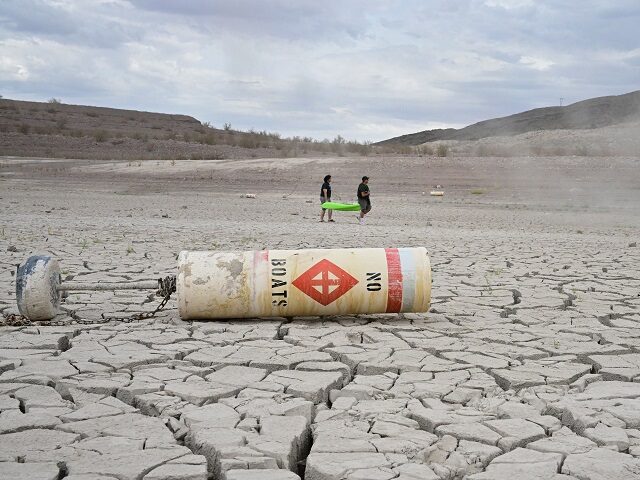Continuing drought conditions in the U.S. southwestern region forced federal officials to announce drastic and unprecedented cuts to the water supplies to two states and Mexico. Lakes and reservoirs along the Colorado River are at historic low levels.
For the first time, officials with the U.S. Department of Interior announced plans to operate in a “Tier 2 shortage,” Fox Weather reported. The plan includes increased cuts in water releases from Lakes Powell and Mead.
The new mandatory water cuts come after Lake Mead and Lake Powell continue to reach record lows due to climate change.
A megadrought and an increase in consumption from Lake Mead caused water levels to drop to an 80-year low.
Satellite images show the decreasing water levels. pic.twitter.com/T5tc7zzmMD
— FOX Weather (@foxweather) August 16, 2022
Fox Weather listed the following changes that will impact Nevada, Arizona, and Mexico. California will be spared.
- Arizona: 592,000 acre-feet, which is approximately 21% of the state’s annual apportionment
- Nevada: 25,000 acre-feet, which is 8% of the state’s annual apportionment
- California: Supply will not be cut
- Mexico: 104,000 acre-feet, which is approximately 7% of the country’s annual allotment
- There is no required water savings contribution for California in 2023 under this operating condition.
“Building on these important responsive actions, Reclamation will begin efforts to modify low reservoir operations at both Lake Powell and Lake Mead to be prepared to reduce releases from these reservoirs in 2024 to address continued drought and low runoff conditions in the Basin,” Interior Department officials wrote in a statement released on Tuesday.
Officials report the surface level of Lake Powell is 178 feet below the full level and only 32 feet above the minimum for electricity generation.
Lake Mead received some relief from a significant monsoon season this year, Fox reported. Bureau of Reclamation officials say there is still a long way to go to bring the lake back to safe water levels.
“At current elevation, an increase in 1 foot of elevation at Lake Mead requires approximately 68,000 acre-feet of water. While the amount of precipitation received in the lower basin and from tributary inflows helps, rainfall from recent monsoons, alone, isn’t enough to offset the decades-long reservoir declines,” Public Affairs Office Michelle Helms told Fox.
The water system relies heavily on melting snowpack from the Rocky Mountains, Fox stated.
Both lakes are reported to be at approximately 25 percent capacity levels.
The cuts are expected to impact farmers in Central Arizona who receive lost most of their water allocations from the Colorado River last year, the AP reported. The shortage impacts producers of livestock, dairy, alfalfa, wheat, and barley.
Phoenix is expected to receive cuts to its water supply that will impact water normally stored in underground basins as a form of “savings account,” the AP stated. City officials report they do not expect residents to feel the impact.
Officials told the states of Arizona, California, Colorado, Nevada, New Mexico, Utah, and Wyoming to plan on using 15 percent less water next year in order to keep reservoir levels from dropping further.
A deadline for states to come to an agreement on water resources came and went on Tuesday, the AP stated. It is not known how much additional time will be provided for an agreement to be reached.
In addition to the water shortages, Lake Powell’s Glen Canyon Dam supplies electricity to between one million and 1.5 million homes each year. Officials are attempting to hold back water releases in order to maintain electricity production.

COMMENTS
Please let us know if you're having issues with commenting.